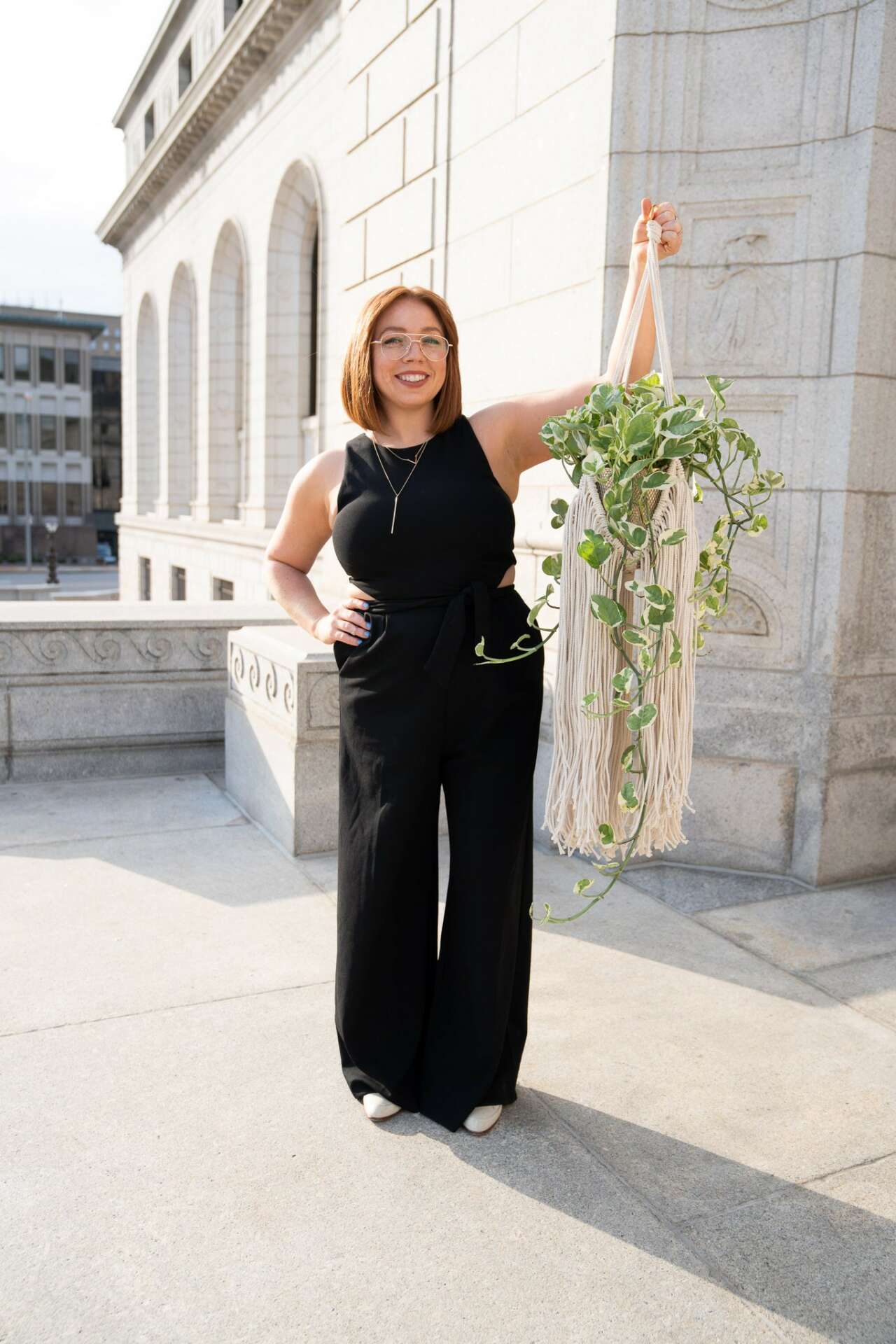We recently connected with Christine Young and have shared our conversation below.
Alright, Christine thanks for taking the time to share your stories and insights with us today. Was there an experience or lesson you learned at a previous job that’s benefited your career afterwards?
While I was working towards my art therapy degree, I was interning at Children’s Hospital Boston on their child and adolescent inpatient psychiatry unit. My years worth of work was coming to an end. Additionally I was receiving supervision both at school and at the hospital. While working on a traditional thesis we were also required to turn in a semester long art project of our choosing that in some way related back to our thesis. One day while in a supervision meeting at the hospital, my supervisor asked me how my thesis was going. I told her it was going well, but I was struggling with one aspect of the painting I was workin on along side the thesis. The art element was not what she was required to help me with, but she indulged and we talked through the problem I was having with it. At the end of the conversation she casually said “what if you were to completely wipe it? If your hands made it once they can do it again.” In those two short sentences my mind was blown… because she was right.
“If your hands made it once they can make it again” is something I have never forgotten, and is a little knowledge nugget I always keep in my back pocket. I apply it to my art work any time I feel like I’m getting too attached to a piece or minor work I have done on a piece. I apply it to my everyday life when I get nervous about decision making. The other take away from that interaction was the lovingly casual way she suggested I get out of my head and approach the work in a different way. It reminded me to play, and to have fun. Rigidity both physically and mentally impedes my work. I am lucky enough to make art for a living. I have the rare opportunity to play everyday.
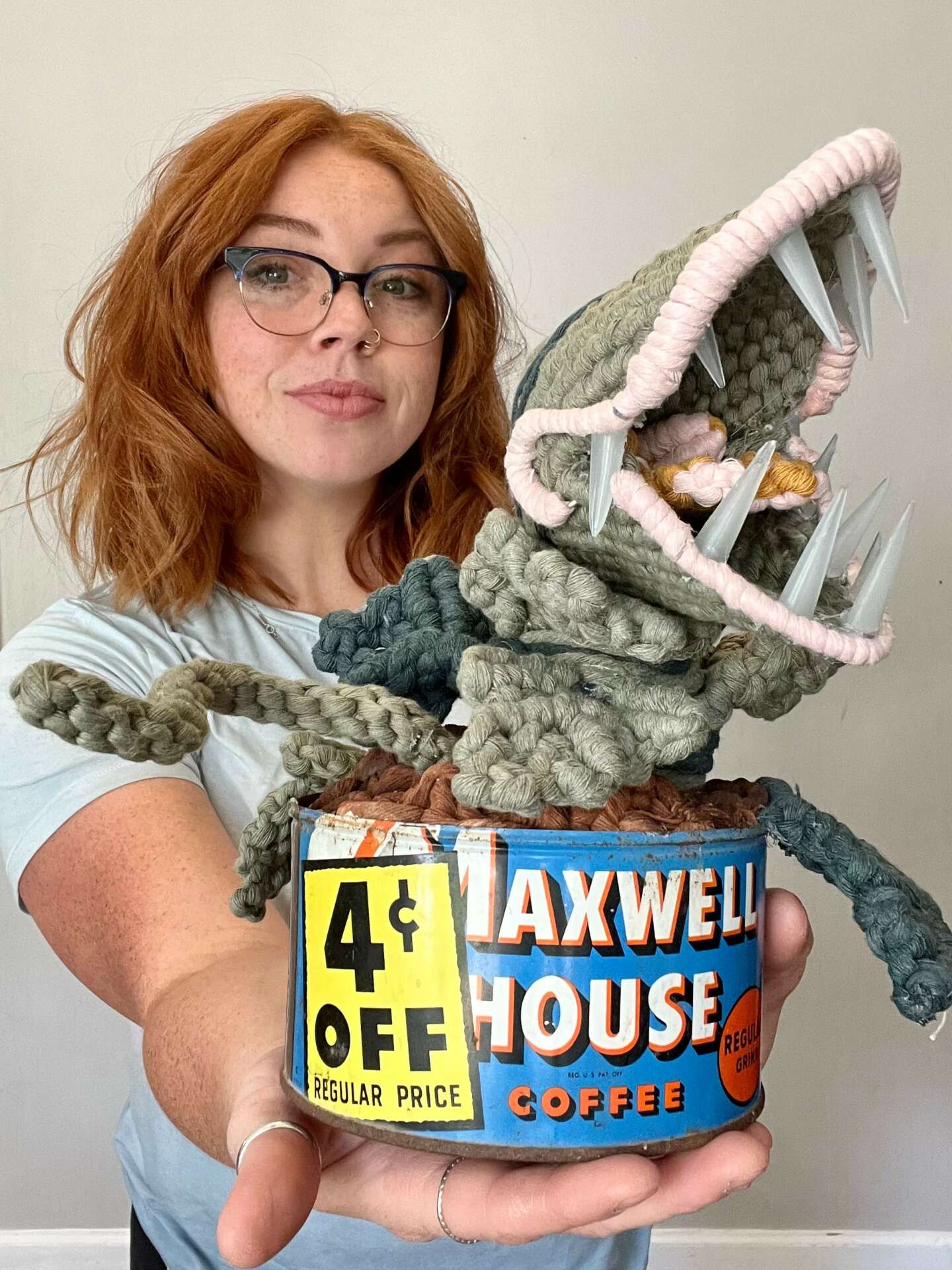
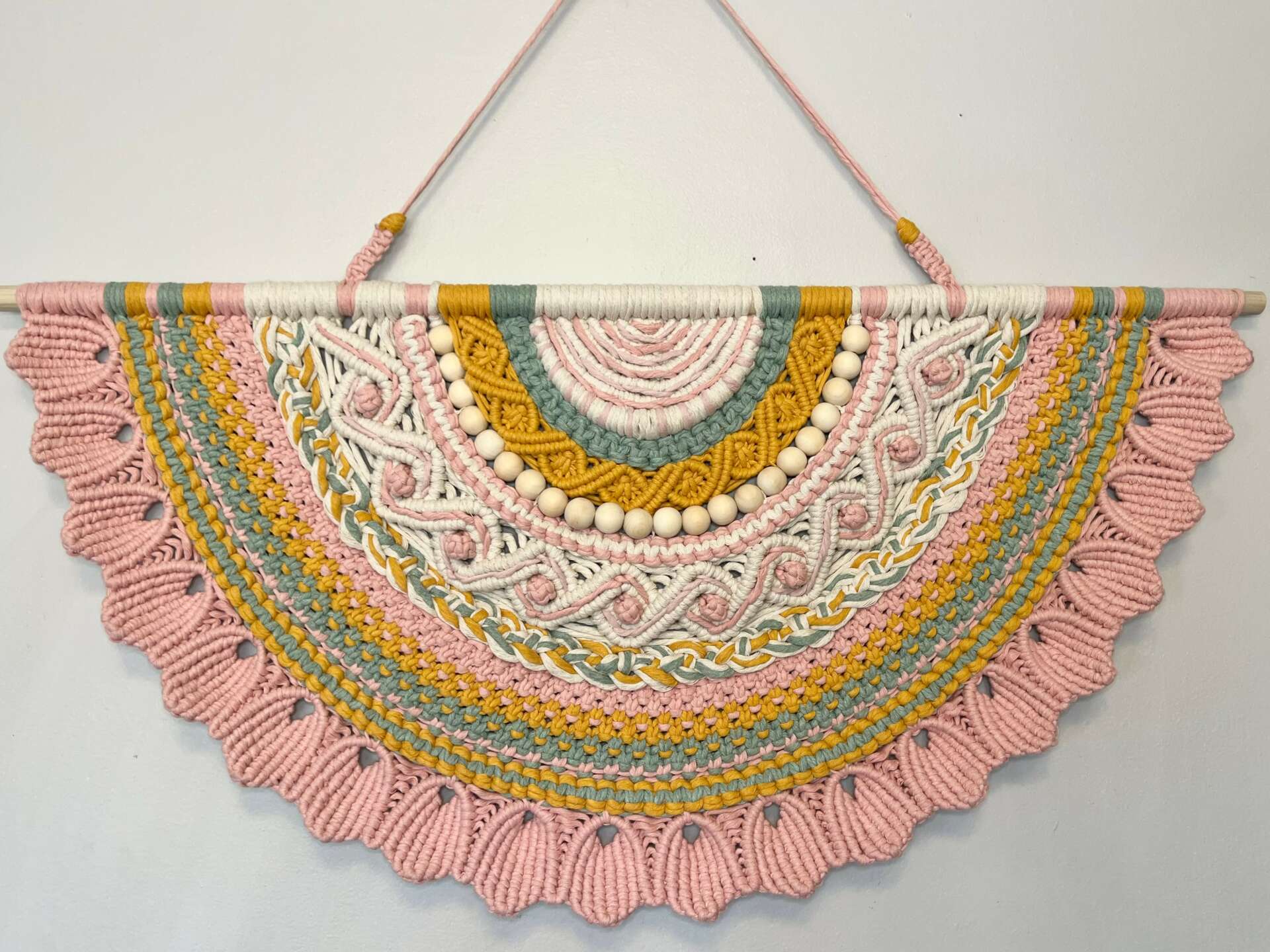
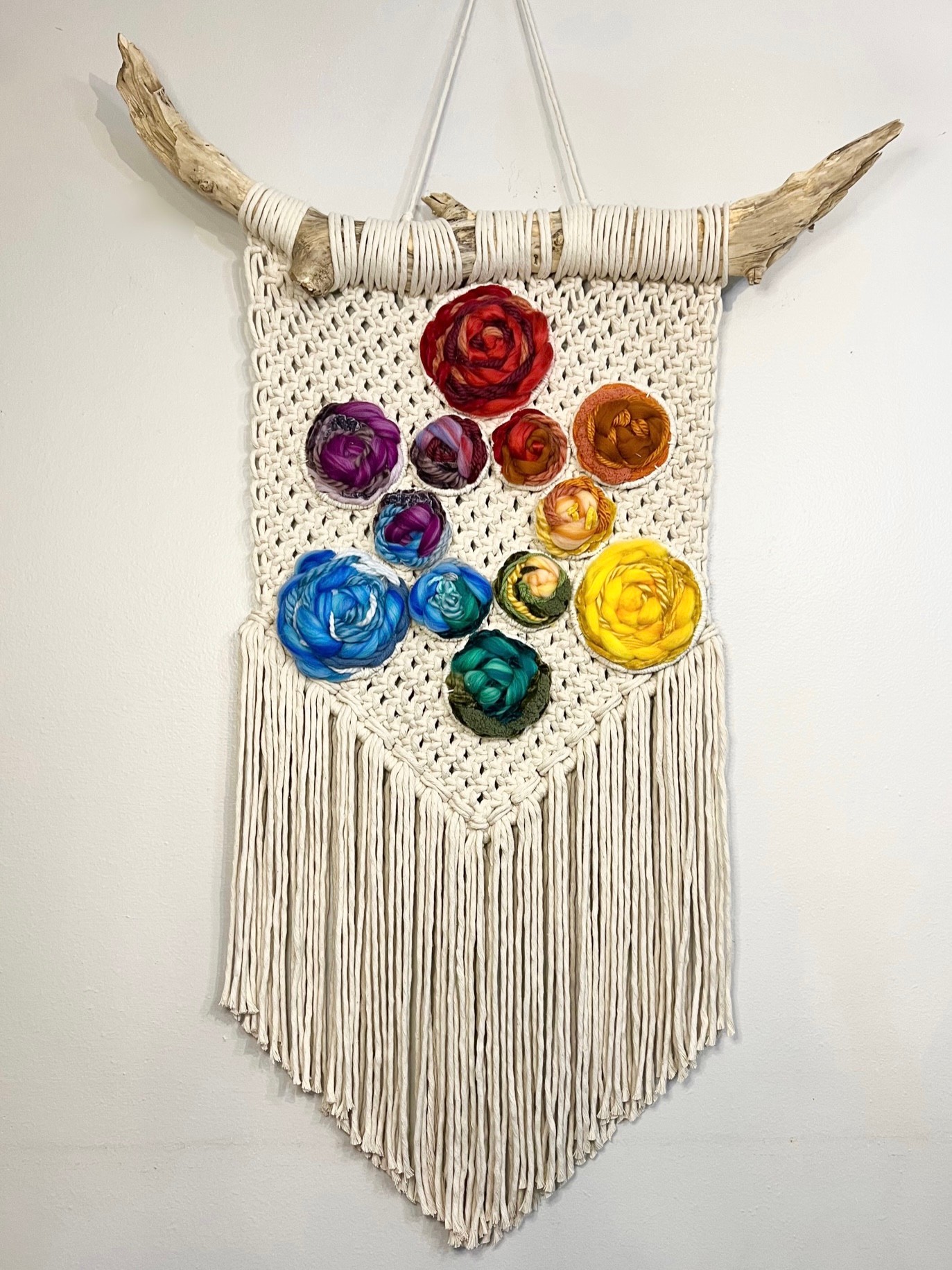
As always, we appreciate you sharing your insights and we’ve got a few more questions for you, but before we get to all of that can you take a minute to introduce yourself and give our readers some of your back background and context?
I went to school for art therapy. After graduation I worked on locked inpatient child and adolescent psychiatry units and provided in-home services for children with severe autism and brain injuries. I would use an array of art forms in both settings to connect with an individual. Whether it was the process of creating art or the ability to express themselves differently, I enjoyed bringing creativity into their care plan. In 2013 when my first son was born with an extremely rare condition requiring multiple surgeries, extended hospital stays, and a unique treatment plan, I knew it was in my best interest to be home with him. Over the next few years, we grew into a family of five. Being a stay-at-home mom was simultaneously the most wonderful and isolating experience. At that time I felt like I had lost so much of my identity. That is when I began carving out time in my day to create. It didn’t matter what I made, what medium I was using, or even if it was any good. My goal was to create.
When I was in school, we were required to take various art classes, dabbling in all mediums. This was a requirement so we would have some knowledge of all art forms so we could use them in a future therapy session. That was when I fell in love with fiber art. Remembering that love, I began making macrame plant hangers and wall hangings. The repetition of the knots felt like mediation. I don’t know if during that tim I needed the knots to help quiet my mind or the finished pieces to bring me joy, all I knew was what I was doing was working. After about 2 years, I started an Instagram account to showcase my work and hold myself accountable to continue creating. The intention of my account quickly shifted as I would post pieces, and people would message me to purchase them. With the connections I was making online, I started to create pieces that shop owners, greenhouses, and even salons began to carry. Now I have my work in a few shops, I attend farmers markets where I sell my work, and my online shop is always open. What makes me most happy is that I have come full circle in being able to offer classes. In the last two years, I have been able to teach in so many settings, from classes of 100 at conventions to local Girl Scout troops. I am again able to share the gift of art.
I literally can knot a handmade fiber art company. Primarily using recycled cotton cording and foraged branches, I specialize in creating original tapestry-style wall hangings. I combine macrame and weaving to create one-of-a-kind pieces. Online and in-person events, you will find a plethora of plant hangers and smaller wall hangings. I consider these items my bread and butter. These items are universally loved and make great gifts. I keep my prices affordable, so people who appreciate handmade items don’t have to decide between shopping for local or mass-produced items in big box stores. That being said, nothing excites me more than a custom order! It is an honor when someone trusts you to make a piece with a special meaning or to go to an area of their home surrounded by so much love. One thing that sets me apart from similar artists is my fluid approach to creating a piece. I do not use patterns or recreate other people’s work. Instead, I use each piece as an opportunity to create something unique. I am a branch collector, and I love to begin each wall hanging with a hike to find the perfect one. While I have an idea of the shape and feel of a piece (or have been given specific dimensions from a client), I intentionally allow the branch to dictate how I start a piece. Working around notches or color changes on a branch allows so much natural beauty to come through. I strive to create a work environment that will enable me to enter a flow state, so a piece can come from my heart and flow out of my hands.
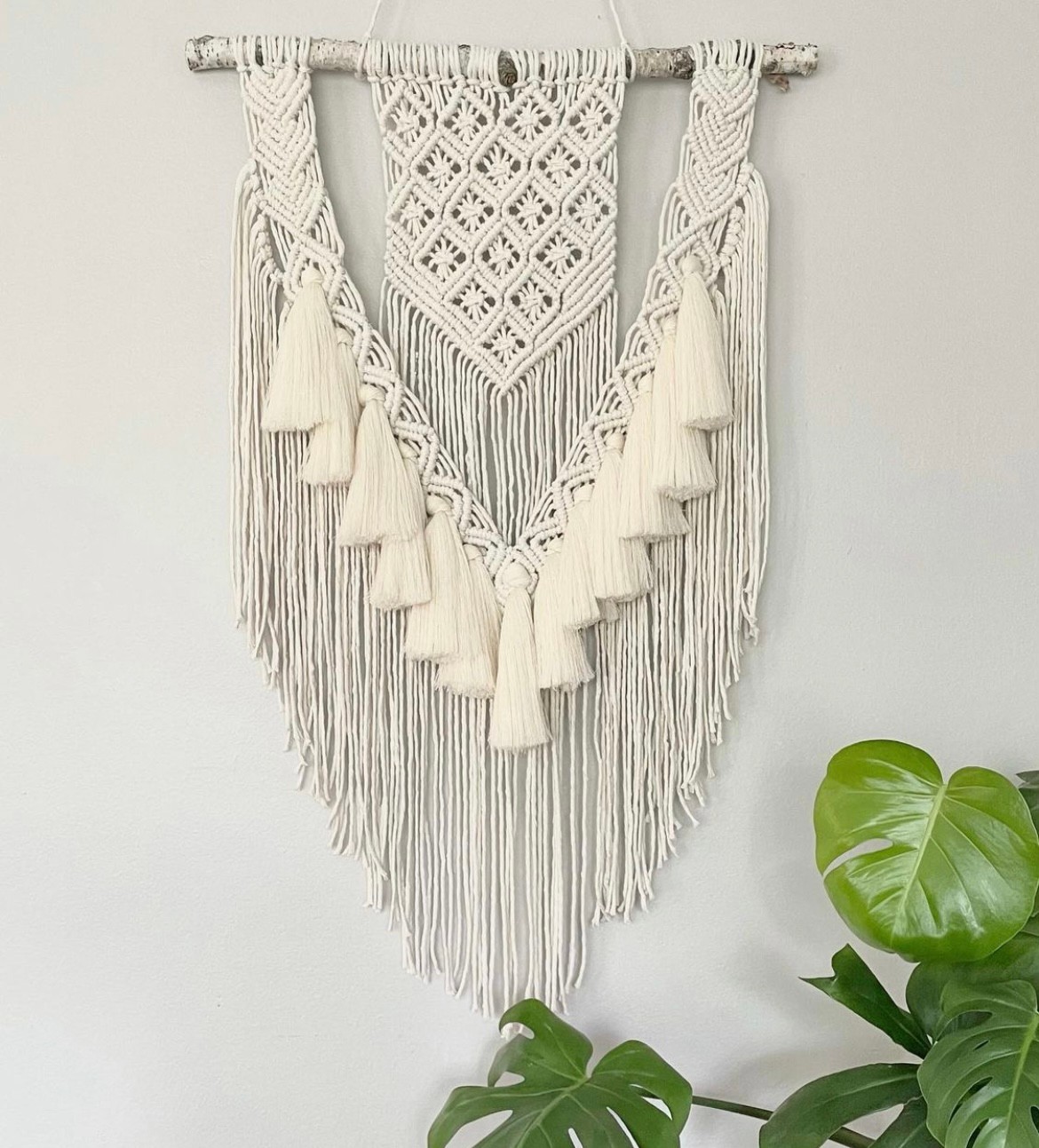
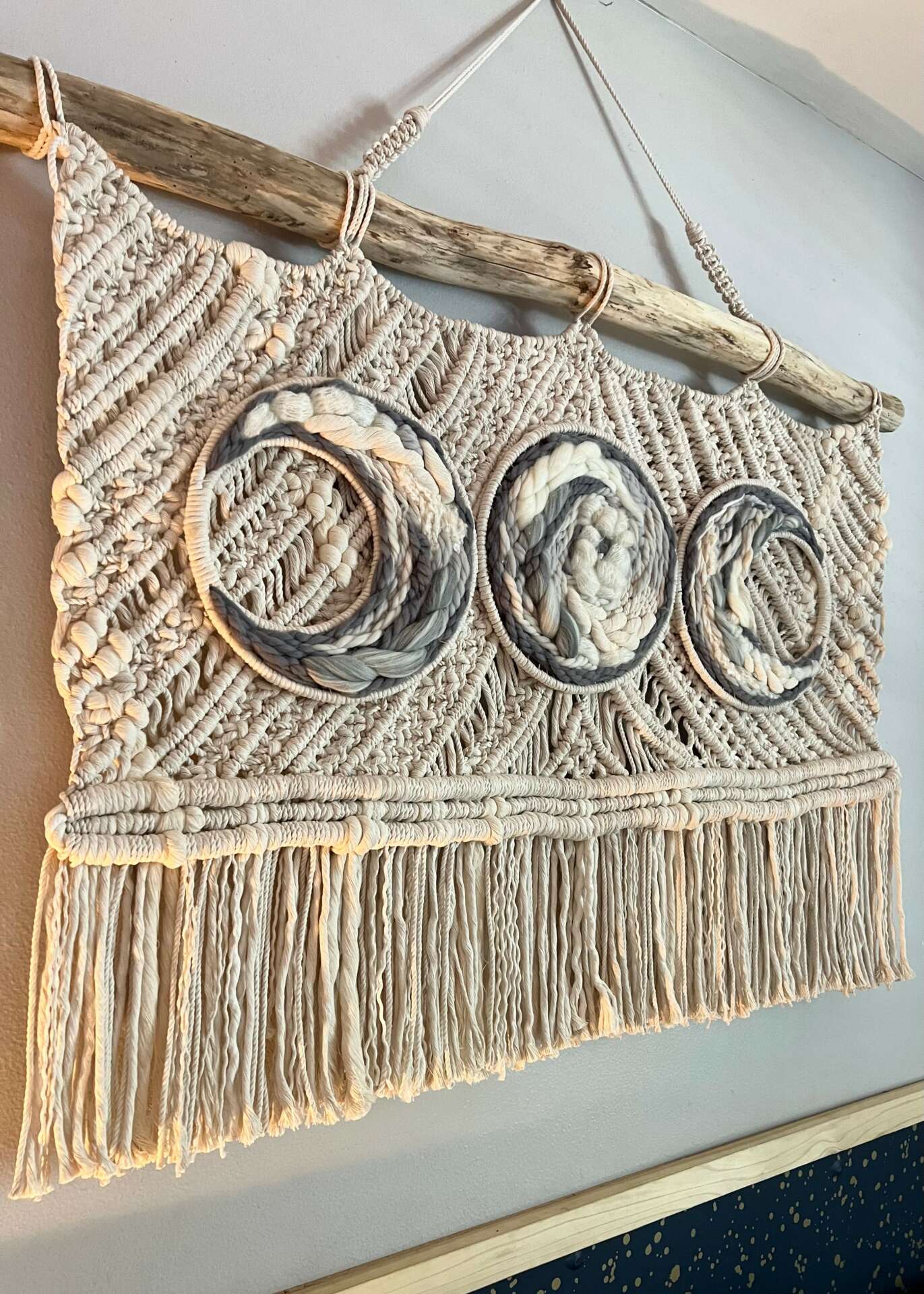
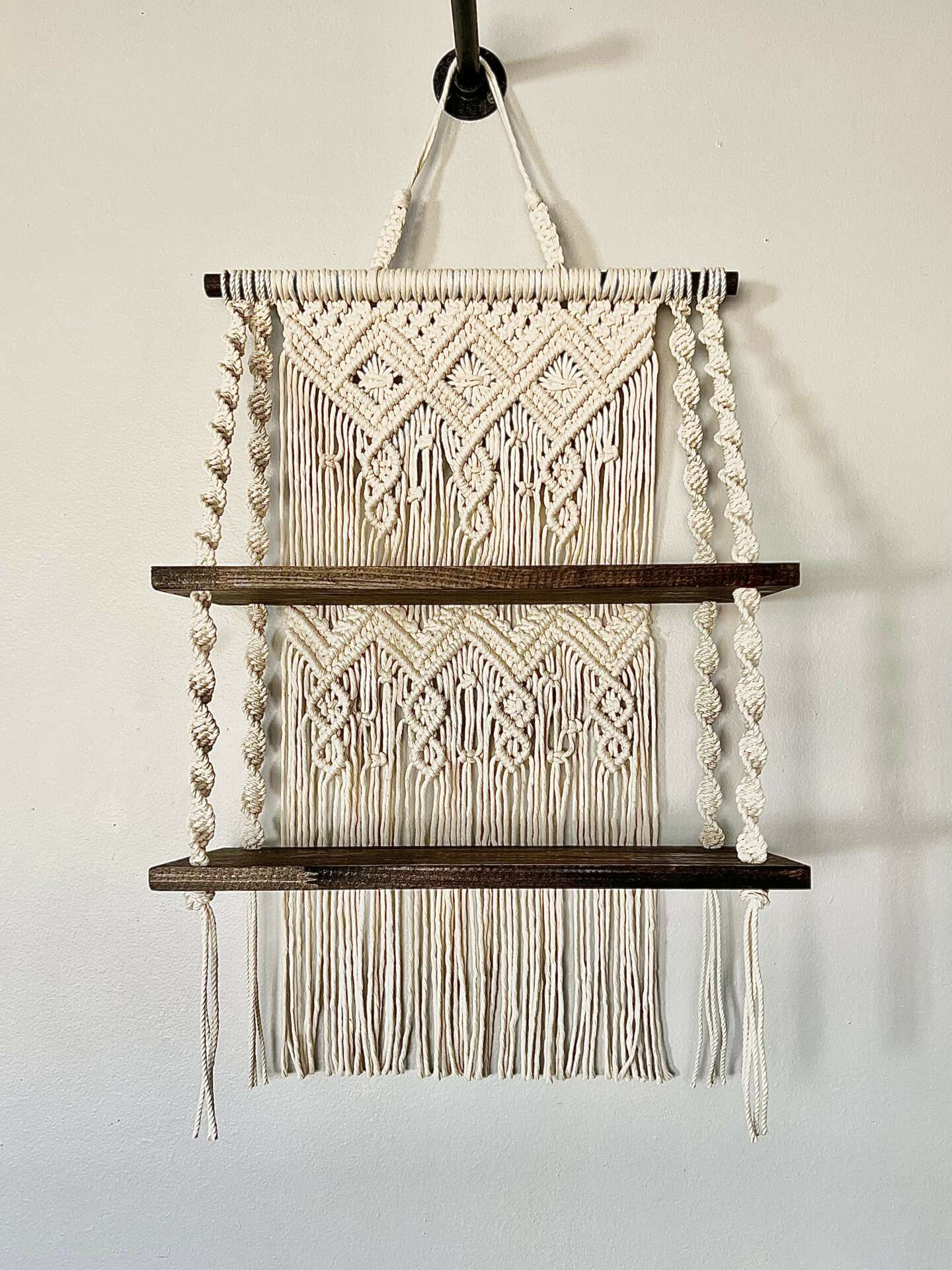
Learning and unlearning are both critical parts of growth – can you share a story of a time when you had to unlearn a lesson?
I think unlearning something can be just as detrimental to an artists growth as learning something. Once I identified that the mental constraints I was putting on my self were self imposed I began to identify and unlearn the habits that brought them about. Why in my mind was I less than and my work less important because I was working as an artist and not a therapist? Why did I feel I need to work 9-5 so I could be validated by all the other parents at school pick up living that same life? Why did I have a hard time answering when asked “what do you do for work?” Because for me, when I started working as an artist I had a lot of unlearning to do. Growing up watching the happy families on tv living idyllic lives, I created a structure of what I had to do and achieve in order to live a life worth living. This way of thinking was in total contrast to living a creative life of an artistic entrepreneur. Once I was able to shed that way of thinking I began to loosen up and that made space for creating.
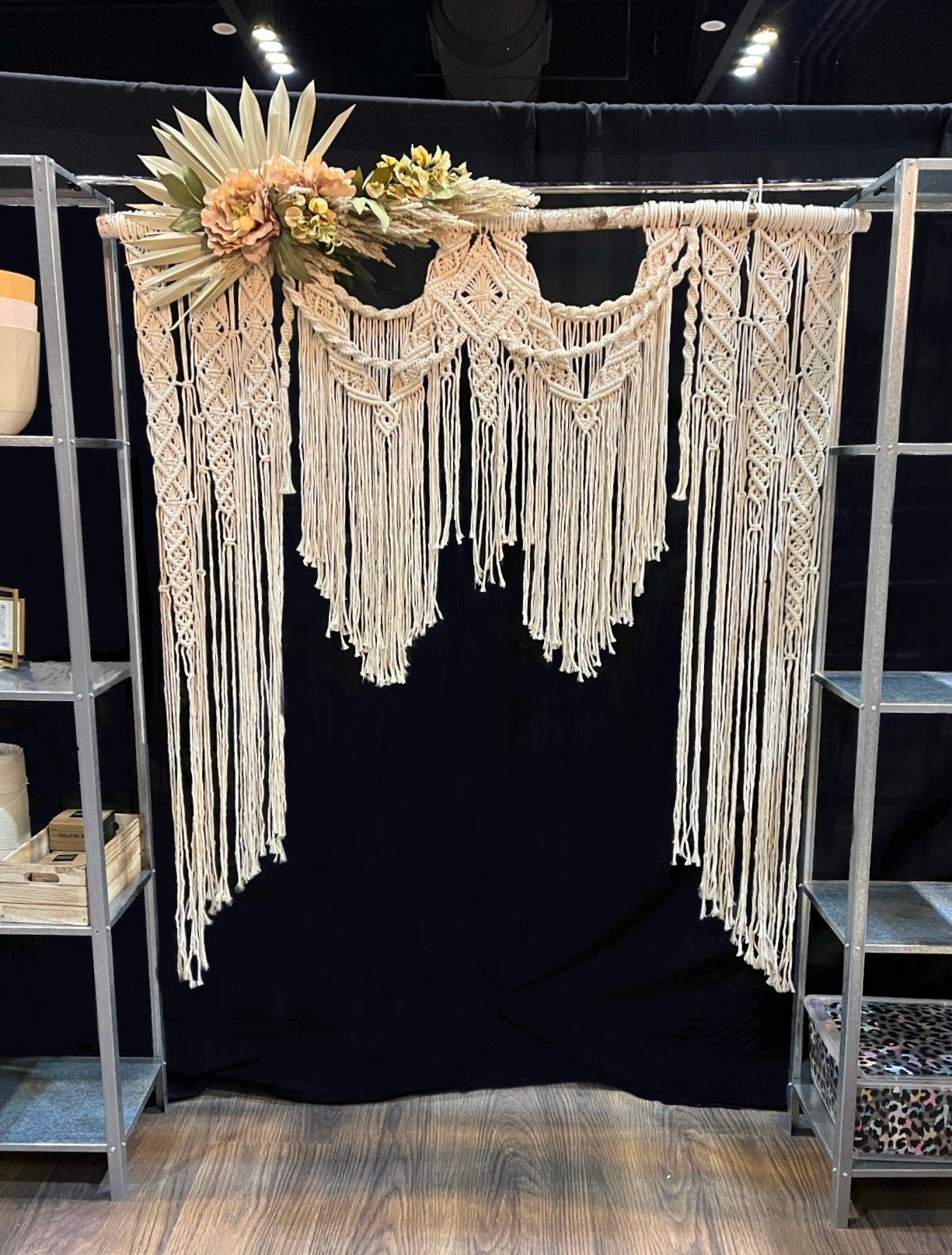
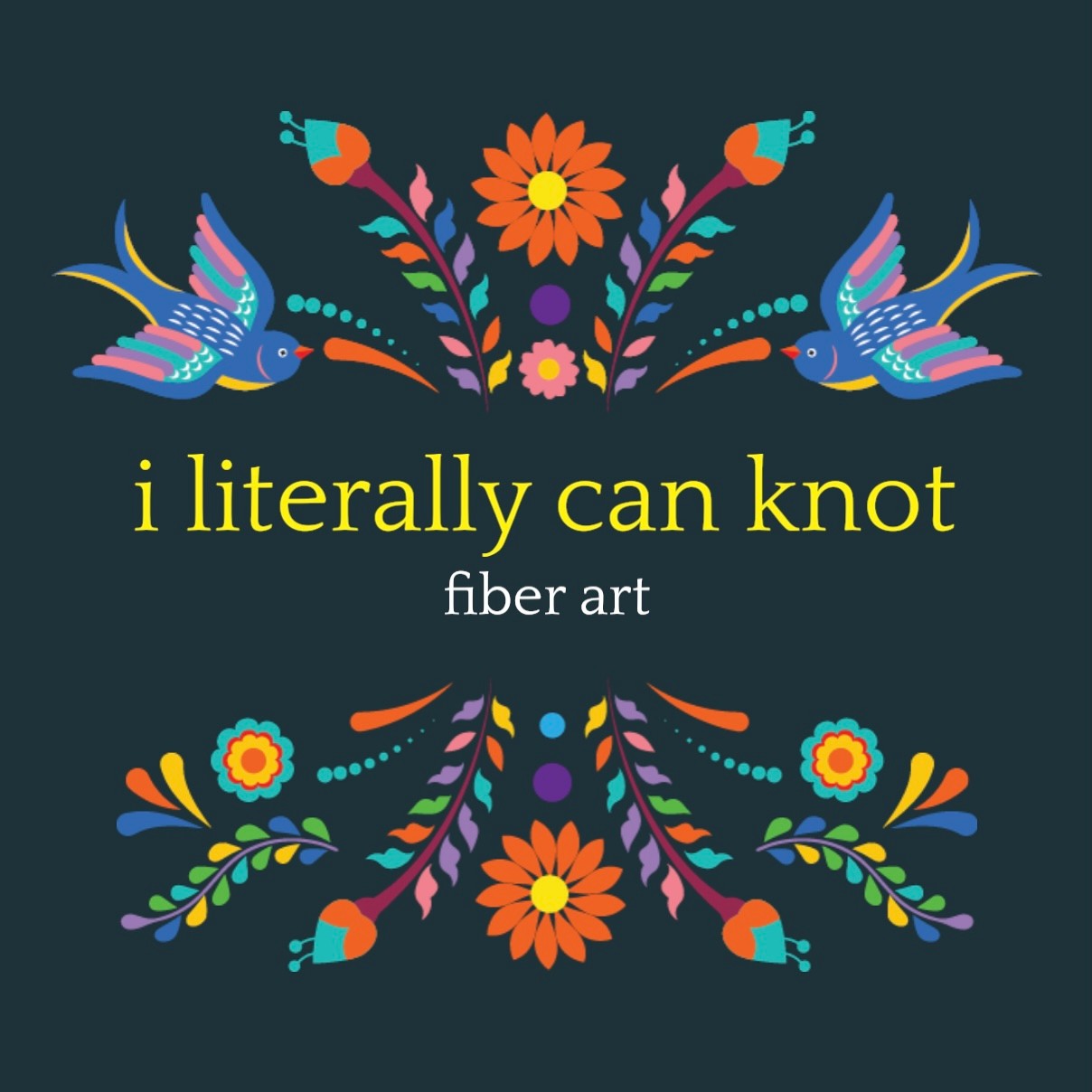
What’s the most rewarding aspect of being a creative in your experience?
The most rewarding aspect of being an artist is life and work is literally what I make it. If I don’t gather materials and set out to make a piece, that piece doesn’t get made. If I just sit around caught up in my mind and do nothing with my materials, nothing gets made. Conversely, if I set a goal and do everything in my power to achieve it, and it happens, it is because I did it. I know that today I have the Christine of yesterday, last week, and last month to thank for the position I am in today. Now, things don’t always pan out the way I would like it to, but when that happened I learn from it and use it as an opportunity to learn and grow.
Contact Info:
- Website: https://iliterallycanknot.com
- Instagram: https://www.instagram.com/i.literally.can.knot/
- Facebook: https://www.facebook.com/i.literally.can.knot
Image Credits
Victorious STL


